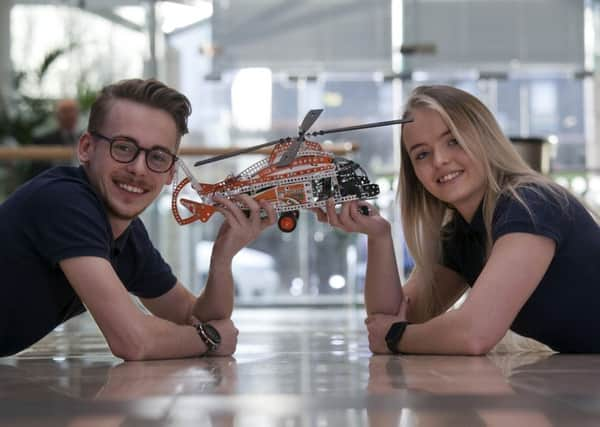Apprentices at defence giant give Scottish pupils a workplace wow factor


But now, in an industry first, two apprentices at Leonardo MW in Edinburgh, Britain’s second largest defence business, have introduced the “wow” factor into work experience programmes by creating a bespoke week of “immersive” activities.
Thomas Sutherland, 22, and Emily Martin, 20, in their third year of a four-year apprenticeship HND in engineering systems, noticed that what youngsters wrote on feedback forms was very different from what they had said to the two colleagues, who had won their trust.
Advertisement
Hide AdAdvertisement
Hide AdThis year is the Westminster Government’s Year of Engineering, and Sutherland and Martin, who are both STEM (science, technology, engineering and mathematics) ambassadors, are in the forefront of a drive to recruit more pupils into a career in the sector.
“I was really, really aware that kids were coming on site where there was all this amazing stuff, but they weren’t getting the wow factor I get when I explain to people what I do,” said Sutherland, who attended Broxburn Academy in West Lothian.
“Originally I spoke to Iain Wildgoose, Leonardo’s vice-president of engineering, because of my ambassador role. It was nerve-wracking but I told him we had concerns about the work placements and that we could do better. It was all very engineering-focused and we wanted to incorporate manufacturing and buying.”
Sutherland and Martin, a former pupil at Currie High School in Edinburgh, then got together with a team of apprentices and compiled a week-long team challenge for pupils including delivering a Meccano helicopter modified with sensors, meeting customer demands, dealing with costings and giving a presentation to a senior Leonardo manager on their project’s progress.
“Thomas and I were nervous when the first batch of pupils came in to do the new programme last November. They were from different schools and when they arrived they were quite reserved but then got chattier and involved in teamwork as the week went on.”
Alan Colquhoun, STEM advisor at Leonardo, who has advised the Scottish Government on attracting more applicants to the sector, said a major advantage of apprenticeships was that young people got paid and that college or university costs were borne by employers and the Scottish Government, meaning they qualified without student debt.
Leonardo, whose headquarters are in Luton, has created a range of world-class defence systems including the electronics in the Typhoon fighter jets, the anti-missile defences in Chinook helicopters and radars. It employs more than 7,000 staff in the UK and has revenues of more than £2.3bn
Sandeep Singh, 15, a fourth-year pupil at Portobello High School in Edinburgh, said: “I thought we’d be just observing, looking at how people work. But it was very exciting and I came back to school with a lot more confidence.”